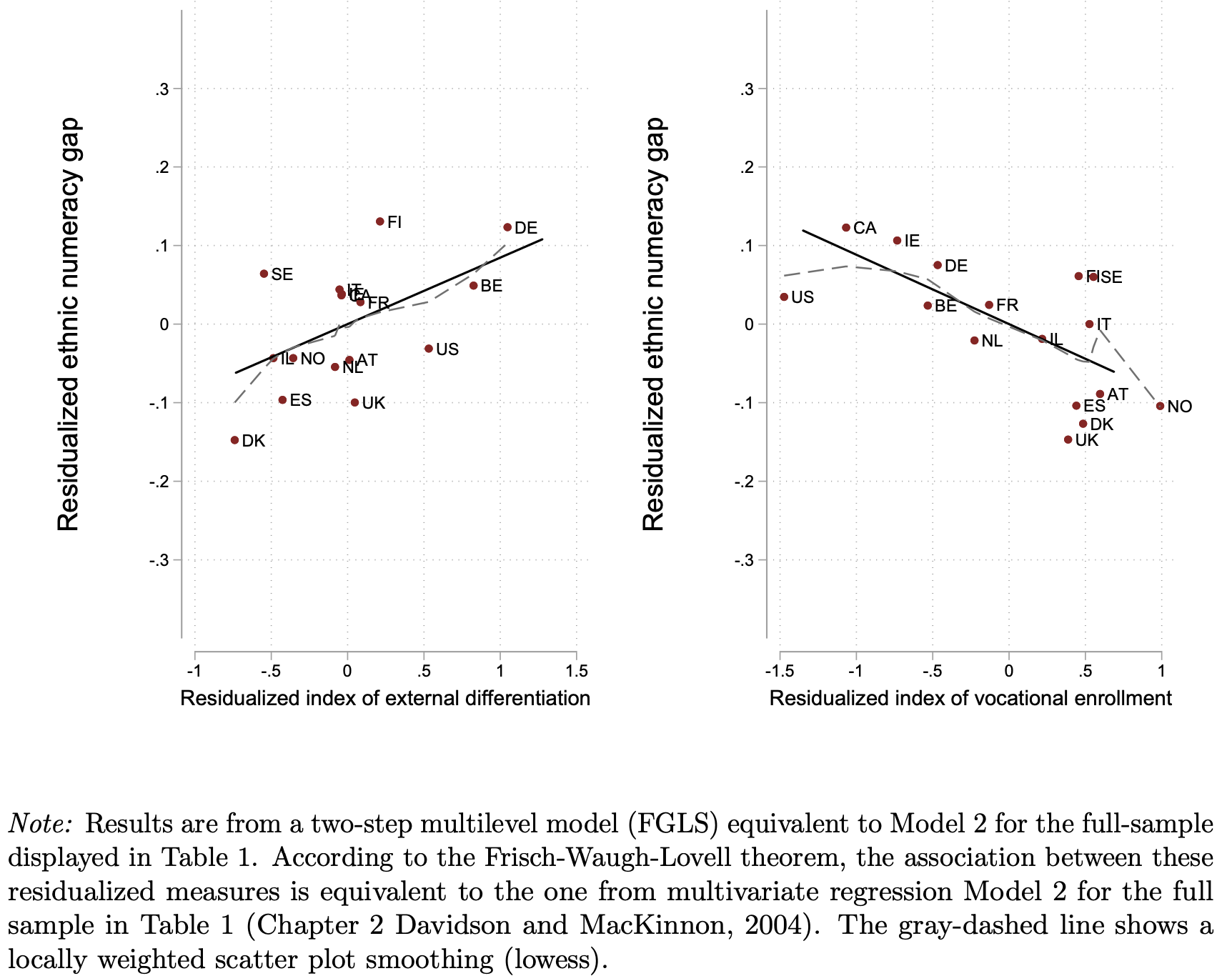Click here for: Slides, or the open access article
Research shows that children of immigrants, the ‘second generation’, have comparatively high educational aspirations. This `immigrant optimism’ translates into ambitious educational choices, given the second generation’s level of academic performance. Choice-driven (comprehensive) education systems, which allow the children of immigrants to follow their ambitions, are therefore regarded as facilitating their structural integration. In this paper, we focus on an underappreciated consequence of these findings. If the second generation strives for higher qualifications than native kids with similar performance, working-age children of immigrants should have lower skills than natives with comparable formal education. This could result in (statistical) employer discrimination and eventually hamper integration. We argue that this pattern should be particularly pronounced in choice-driven education systems and in systems that emphasize vocational education. Two-step regression models using data on 16 countries support these expectations — as visualized by the Figure below. We explore implications of our findings for comparative research on ethnic gaps in labor market attainment.
